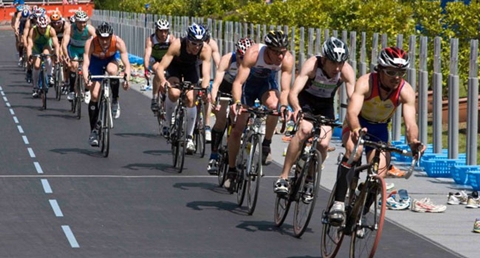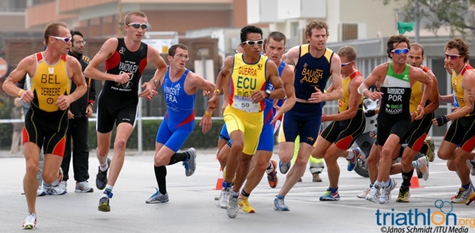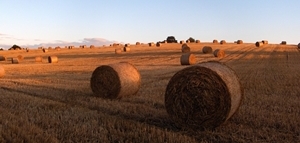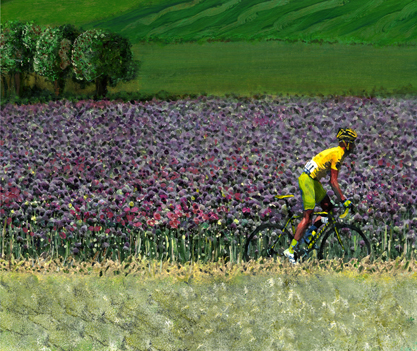Cycling Pedaling Technique |
|
This article is intended to help you improve your pedaling mechanics and technique to improve your aerobic efficiency, cycling motor skills and muscle development, and cycling power and performance.
Cycling Technique and Pedaling Mechanics
- Learn not to “mash” gears and instead learn how to achieve a higher cadence (RPMs) will allow you to cycle and race faster and more efficiently.
- Pedaling should be envisioned as pedaling more in “circles”. Although some research suggests that a combination of pedaling in circles with a little more juice (mashing) on the down stroke.
- During the recovery period of a pedal stroke, continue the circular motion of pedaling, while pulling up on the pedal at the same time. A common mistakes in cycling is only pushing down on the pedals and not pulling up. By just mashing, you are losing the power potential of the upstroke. Maximum power is achieved in a 360 degree stroke effort.
- Avoid rocking motion while cycling.
- Avoid bouncing while cycling.
- Keeping your upper body motionless. Avoid allowing your hips to rock from side to side. An upper motionless body helps maintain energy focused on moving the bike straight forward. You will get more force to the pedals and more forward momentum if you can become fluid in getting the power from the pedal stroke to your legs.
- Higher Cadences: Cadence is defined in RPM’s. An RPM’s between 90-110 is considered ideal. This is definitely a learned skill. Riding in the smaller gear is the best way to improve RPM’s. It is recommend the first 40 minutes of a ride be done in the smaller gear at a higher cadence. The use of higher cadences produces more efficient cycling, with less fatigue to your legs because you will be using less Type 2 muscle fibers (fast twitch muscles) that fatigue more easily. By minimizing the use of your fast twitch fibers you will:
- - Decrease glycogen use (burn less fuel)
- - Decrease lactate production (which is when you start to feel the burning sensation during the workout)
- - As a result, you will experience less muscle fatigue
Cycling Hydration
Good Hydration is essential to maintain peak performance for very active individuals and competitive athletes. However, reliance on water alone for hydration, or excess water consumption, can have the effect of flushing needed vitamins and minerals from the body. The more active one is the greater one’s hydration needs. Hydration is important for cyclists particularly when cycling long distances. Hydration is equally as important during cold weather as it is in hot, dry or humid weather. In cold weather, dehydration can cause hypothermia very quickly. Drinking plenty of fluids during cold weather is essential to maintain core body temperatures.
When cycling in hot weather, the combination of the external heat and the internal heat produced from cycling, heat within the body can build causing Hyperthermia which is having a core body temperature that is too high. Maintaining good hydration can reduce the onset of Hyperthermia as good hydration enhances sweating which acts to cool core body temperatures.
In very humid weather, our sweat doesn’t evaporate as very well and we tend to sweat more with less cooling effect thereby loosing needed fluids to maintain good performance. When lost fluids are not replaced our body begins to shut down starting with heat cramps and muscle cramps due to lack of electrolytes. Fatigue will begin to increase when fluids are not replaced and under extreme lack of fluid replacement heat exhaustion or stroke can occur.
It is recommend we drink 24oz of fluid each hour cycling. It is also recommended to maintain best performance that fluids contain electrolytes, carbohydrates, calcium and protein. Interestingly, Nonfat Milk contains a natural mix of electrolytes (Yes, milk is high in Potassium!), carbohydrates and protein and is a good source of Hydration when the weather is cooler or in early morning rides.
Cycling Injury Prevention
It is possible to maintain cycling high performance and prevent cycling injury.
- Delayed Onset Muscle Soreness. Delayed Onset Muscle Soreness is the muscle/body soreness that occurs after heavy exercise and can be felt after several hours or two days later. Two Ways to avoid Delayed Onset Muscle Soreness:
1. Maintain good Hydration
2. Stretching. The best ways to avoid this injury is to stretch thoroughly before and after rides. Stretching before the ride relaxes the muscles and allows them to start the exercise at their fully lengthened state. While riding a bike your quadriceps and hamstrings are constantly contracting concentrically (shortening) and eccentrically (lengthening) to control your pedal stroke. This constant squeeze on the muscles makes them want to stay in a shortened state after the ride. Stretching after the ride allows the muscles to return to their fully lengthened relaxed state which relieves tension left on the muscle. When the used muscles are relaxed and in their fully lengthened state the movement those muscles and joints is much less pain full.




